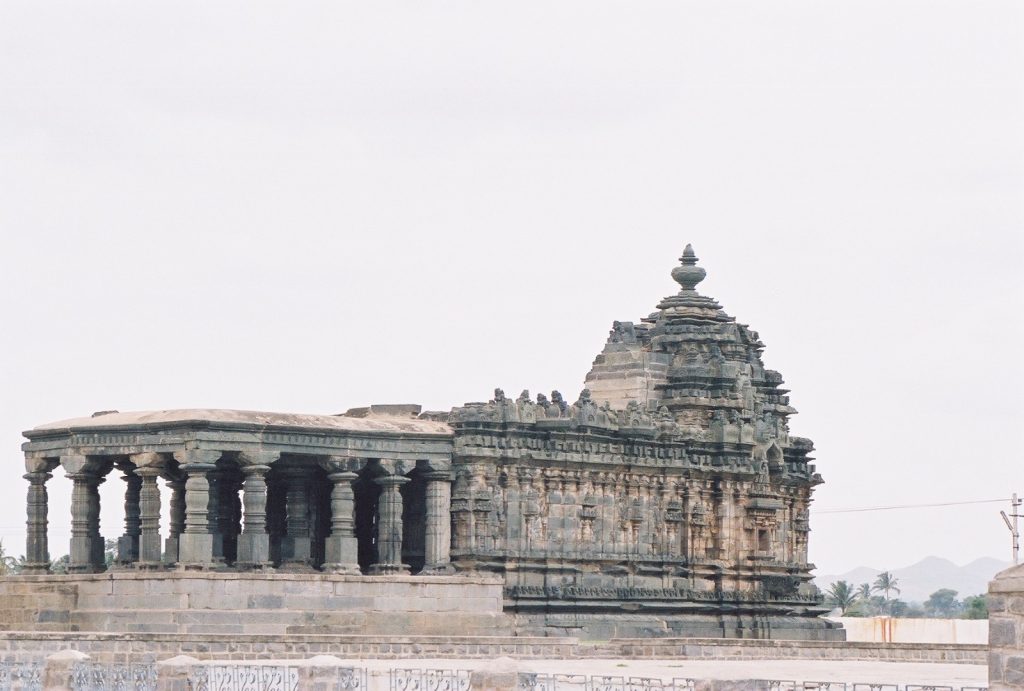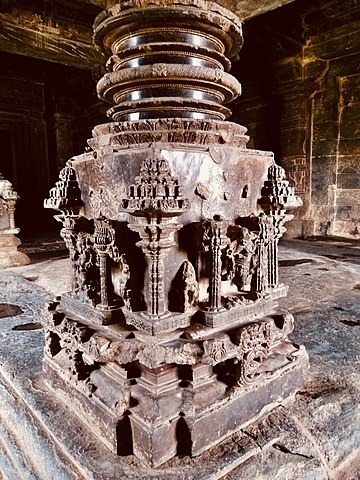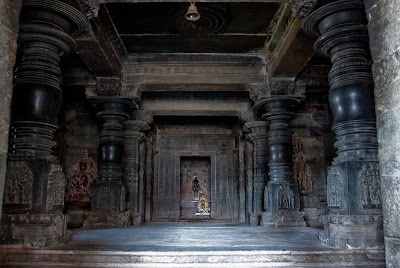Ancient World’s Biggest Metropolis
Hampi, located in Karnataka, India, is a historic and culturally rich city. UNESCO has designated Hampi as a World legacy Site, making it a popular place for tourists who want to fully experience India’s rich cultural legacy. Hampi was formerly the capital of the formidable Vijayanagar Empire. Hampi had enjoyed great prosperity and was regarded as the world’s biggest metropolis .Hampi had special trading markets for diamonds, pearls, silks, and brocades. It also had lavish palaces, magnificent temples, royal quarters, embassies for foreign emissaries, massive fortifications, large pools, baths, water management systems, aqueducts, pavilions, stables, riverside features, pillared halls, Mandapas, memorial structures, gateways, and defense checkpoints.Attracting traders and tourists from all over the world, Hampi was a hub of trade, commerce, and culture at this period.

LOTUS MAHAL
Lotus Mahal is within Zenana Enclosure, a quiet region set aside for the royal ladies of the Vijayanagar Empire, at 500 meters from Hazara Rama Temple. This is also called Kamal Mahal and Chitragani Mahal. It fits into the Hampi classification system’s nonreligious or secular category. The lovely building and architecture were not harmed in the annexation of this city. On the few statues that have been placed outside, there are still a few marks of mutilation. The Lotus Mahal was constructed using bricks and a lime mortar mixture. It is an amalgam of the popular Indo- Islamic architectural styles from the Vijayanagar Empire. Hindu and Islamic architectural styles are mixed in the building to produce a distinctive look. The more elaborate carvings and embellishments were done in stone, but the framework is composed of brick and stone.


A remarkable contrast in texture, color, and visual interest is produced by the employment of both materials. It comprises a two-story building with an open base level. There are sidewalks with big windows with arches. The upper floors with arched windows have balconies. On the walls nearer to windows, there is also a structure meant to resemble a hook that is used to hang curtains. The arches on the ground floor are elaborate and recessed. Four smaller dome-shaped pavilions are located on each corner of the Lotus Mahal, which features a central pavilion. The building’s name is derived from the lotus blossom finial that sits atop the central dome. In Hinduism, the lotus bud is a representation of holiness and divinity. The structure’s walls are covered in elaborate carvings with a variety of designs and themes, such as lotus blossoms, elephants, and horsemen. Its distinctive fusion of architectural elements is furthered by the exquisite Islamic-style carvings on the arches and pillars. A breathtaking spectacle may be seen when the Lotus Mahal is illuminated at night. There is a myth that the palace used air conditioning to regulate the temperature during the summer. The construction of the pipeline above and between the arches is evidence of this. Additionally, there is a lawn surrounding the Lotus Mahal where you can relax outside.
One of Lotus Mahal’s most distinctive characteristics is its embellishments,which includes beautiful stucco work and sculptures on the walls and pillars of the pavilion. Here are some specifics on its ornamentation:
Carvings: The elaborate designs of lotus flowers, vines, leaves, and other natural components may be seen in the carvings on the walls and pillars of Lotus Mahal, which are mostly floral and geometric in style. Along with representations of mythical creatures like valis and makaras, the sculptures also feature gods, goddesses, courtiers, musicians, and dancers. These carvings are done in a high relief manner, giving the surface a three-dimensional appearance that adds depth and texture.
The stucco work on the walls of Lotus Mahal is equally intricate and features a variety of themes and designs that were created using a plaster of Paris medium. The stucco work features representations of gods and goddesses in addition to musicians and dancers from courtly life.
With an emphasis on detail and realism, the figures are depicted in a variety of poses and attitudes. The pavilion’s surfaces are decorated with elaborate patterns and artwork made of stucco, including arabesque and medallions
Color: Vibrant shades of red, green, and blue have been used to the carvings and stucco work to further highlight the splendor of the Lotus Mahal. The use of color adds richness and depth to the ornamentation, creating a visual feast for the eyes.
Symbolism: The ornamentation on Lotus Mahal is symbolic rather than merely decorative, reflecting the Vijayanagara Empire’s religious and cultural values. For instance, the representations of gods and goddesses are meant to evoke their protection and blessings, while the floral themes signify the cycle of life and rebirth. The utilization of legendary creatures like yalis and makaras, which are said to have benevolent qualities and can ward off evil spirits, is also noteworthy.
The pavilion’s distinctive fusion of Hindu and Islamic architectural styles, its intricate ornamentation, and its innovative acoustic design make it a true masterpiece of medieval India. The Lotus Mahal is a remarkable architectural wonder that is a testament to the creativity, skill, and cultural richness of the Vijayanagar Empire. Its beauty and wonder continue to awe and impress visitors to this day.
Glossary
Formidable – inspiring fear or respect through being impressively large, powerful, intense, or capable Recessed – built in a space in a wall
Benevolent – marked by or disposed to doing good
Stucco – a fine plaster used in decoration and ornamentation Mutilation – damage to something.
Arabesque – form of artistic decoration
Medallions – an oval or circular painting, panel, or design used to decorate a building or textile. Embellishment – a decorative detail or feature added to something to make it more attractive.



